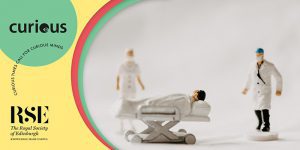Gold nanospheres are advanced nanomaterials with a strong potential in high-tech biomedical applications. It is possible to modify gold nanospheres’ optoelectronic and physiochemical properties by altering their structure, size, and width-to-height ratio. This blog post outlines the major biomedical applications of gold nanospheres like nano biosensing, imaging, drug and gene delivery, and therapeutic agents.
Gold Nanospheres in Sensing
Biosensing is one important application of gold nanospheres. Traditional methods for sensing biomolecules such as polymer chain reaction and enzyme-based assays are complex and expensive. Various diseases can be effectively examined with the help of gold nanospheres, such as cancer, kidney failure, urinary tract infections, and cardiac arrest. Gold nanospheres also find common applications in optical sensing, colourimetry, and fluorescence resonance energy transfer. In modern applications, the gold nanospheres have proved to be a boon in detecting DNA/RNA nucleotides and the antisense RNAs that can be used to determine the mutations in DNA strands.
Gold nanospheres enhance Raman signals and are therefore used to increase the susceptibility of Raman-based biosensors. With Raman sensors, biomolecules can be sensed even at extremely low parts per billion concentrations. The enhanced sensitivity of biosensors aids in the early diagnosis of a disease. Gold nanospheres are also used in sol particle immunoassay for detecting hepatitis B and pregnancy tests.
Gold Nanospheres for Imaging
Gold nanospheres have low toxicity, high biocompatibility, ease of synthesis, and reduced interaction with biological components. Therefore, they find promising applications in photoacoustic, fluorescence imaging, X-ray computed tomography (CT), magnetic resonance imaging, and darkfield microscopic imaging. X-ray computed tomography is a cost-effective technique for tissue imaging as CT can help in 3D visual reformation and tissue bisection. The functioning of CT is based on the density difference between healthy and diseased tissues, which contrasting agents generate. Gold nanospheres are now replacing traditionally used iodine as a contrasting agent due to their higher electron density and higher atomic number.
Due to their high electron density, gold nanoparticles find applications in electron microscopy for detecting biospecific interactions. Confocal laser microscopy (CLM) is used to identify the micro-objects such as living cells.. Magnetic resonance imaging (MRI) is another well-known imaging technique for 3D anatomy. The use of gold nanospheres in MRI helps diagnose brain tumours in living mice.
Gold Nanospheres as Therapeutics
Gold nanospheres are actively used in photothermal therapy, drug care, and genetic control. They are effective in treating rheumatic diseases. “Swarna bhasma“, a gold powder with nanometer-scale particles developed in India, is used to treat arthritis, muscular dystrophy, and anaemia. Gold nanospheres are also used for dental restoration and treating mental disorders and syphilis.
Due to reduced toxicity, ease of surface attachment, and availability of multiple attachment sites, gold nanospheres act as an effective medium for gene delivery. They can be used as magnetic field-guided drug deliverers and carriers for delivering DNA molecules and antisense RNA.
Gold nanospheres possess magnificent cell affinity and can be easily absorbed by the immune cells. Thus, they can be used in targeted photothermal cancer therapy to kill diseased cells without affecting normal cells. Gold nanospheres also aid in preventing drug resistance of cells that could otherwise be life-threatening. Gold nanoparticles are used in gene therapy to treat potential diseases by developing transfection agents. They can regulate protein expression and suppress luciferase expression in cells. The gold nanospheres also work as antioxidant agents by inhibiting the formation of reactive oxygen species.
Contact our team today to know more about the ideal gold nanospheres produced by Nikalyte for your target applications.
References:
- A. Giljohann et al. Angew Chem Int Ed Engl. 2010; 49(19):3280-94. doi: 10.1002/anie.200904359
- Hu et al. Front. Bioeng. Biotechnol. 2020;8:990. doi:10.3389/fbioe.2020.00990
- A. Dykman et al. Acta Naturae. 2011;3(2):34.
- Yi-C. Yeh et al. 2012;4(6):1871.
- A. Bansal et al. Nanoscale Adv. 2020;2:3764.

